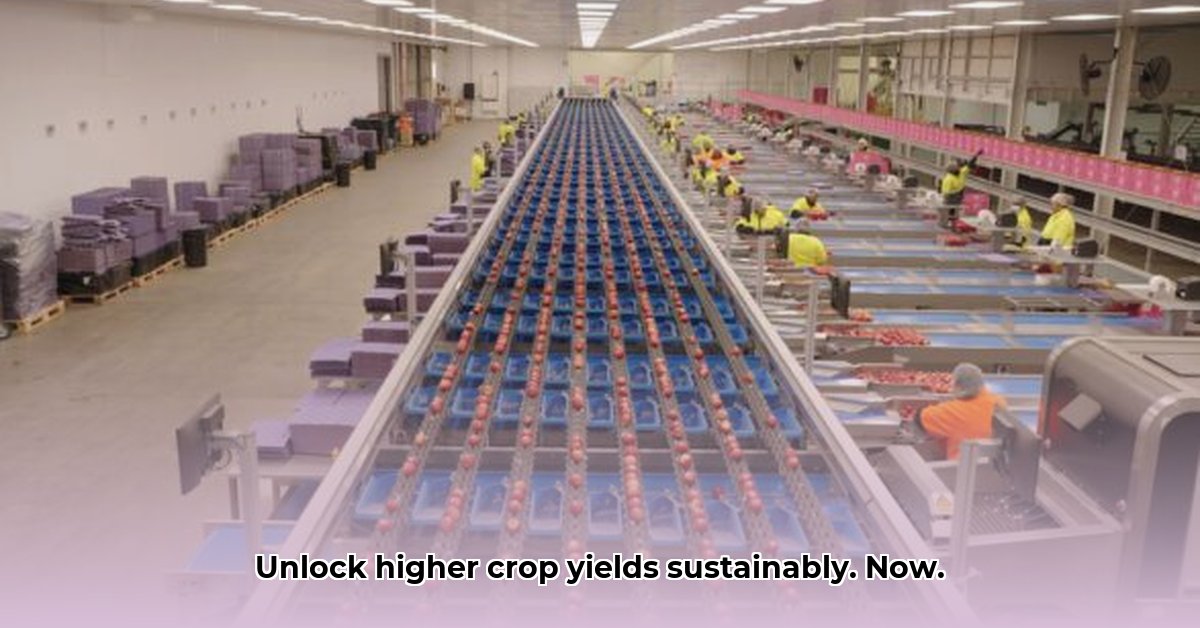
Feeding a growing global population while mitigating the environmental impact of agriculture is a monumental challenge. Traditional farming practices often lead to unsustainable resource depletion and environmental degradation. However, advancements in agricultural technology offer promising solutions. Spectrim, a novel precision agriculture system, represents a significant leap forward, enabling farmers to increase yields while reducing their environmental footprint. This article will explore Spectrim's capabilities, its practical applications, and the steps required for its successful implementation. It will also delve into the current challenges and future potential of this transformative technology.
Understanding Spectrim: Precision Agriculture Redefined
Spectrim isn't a single technology, but rather a synergistic system integrating multiple technologies to optimize crop growth. At its core, Spectrim leverages a network of sensors deployed across agricultural fields. These sophisticated sensors continuously monitor a wide array of environmental and plant-specific parameters, including soil moisture, temperature, light intensity, nutrient levels, and even subtle variations in plant health (using techniques like hyper-spectral imaging – the capture of images using a broad spectrum of light, revealing information invisible to the human eye).
This massive data influx is then processed using advanced algorithms and data analytics. These algorithms identify patterns and anomalies, providing actionable insights for farmers. For example, the system might pinpoint areas experiencing nutrient deficiencies, enabling targeted fertilizer application, minimizing waste and maximizing efficiency. Similarly, Spectrim can optimize irrigation schedules, ensuring crops receive precisely the right amount of water, avoiding both water stress and wasteful over-irrigation.
But how does this translate into real-world benefits?
Spectrim's Impact on Sustainable Agriculture
The potential benefits of Spectrim are substantial and far-reaching:
Increased Yields: By optimizing resource allocation and addressing potential problems proactively, Spectrim has the potential to significantly increase crop yields. Early trials suggest yield improvements in the range of 10-20% are achievable across various crops and conditions, though further research is needed to validate these results more broadly. Wouldn't a 15% increase in yield significantly improve a farmer's income and food security?
Reduced Resource Consumption: Precise application of water, fertilizers, and pesticides based on real-time data minimizes waste, contributing to significant reductions in resource use. This translates to lower production costs for farmers and a greatly reduced environmental impact. How much water and fertilizer could be saved annually through the widespread adoption of Spectrim?
Enhanced Crop Quality: Consistent monitoring and optimization of growing conditions lead to improved crop quality, resulting in higher market value and increased profitability for farmers. Improved quality also translates into better nutrition for consumers.
Proactive Disease and Pest Management: Early detection of diseases and pests through hyper-spectral imaging and other sensors allows for prompt intervention, minimizing crop losses and the need for broad-spectrum pesticide applications. Early detection could prevent significant crop losses, right?
Implementing Spectrim: A Practical Guide
Integrating Spectrim into farming operations involves a structured approach:
Needs Assessment: Begin by thoroughly evaluating your farm's unique characteristics, challenges, and resource limitations. Identify specific areas where Spectrim's capabilities can provide the greatest benefits.
Technology Selection: Choose the appropriate Spectrim components based on your farm's size, crop type, budget, and technical proficiency. This may involve selecting specific sensor types, data analytics tools, and software platforms.
Data Acquisition and Analysis: Deploy sensors strategically across your fields. Regularly monitor data streams and leverage the analytical tools provided by Spectrim to interpret the insights.
Actionable Interventions: Based on the data-driven insights, implement targeted interventions. This could involve adjusting irrigation schedules, applying fertilizers precisely where needed, or undertaking preventative measures against diseases and pests.
Continuous Monitoring and Refinement: Regularly evaluate the impact of implemented interventions. Adjust strategies based on data trends and continuously refine your approach for optimal results. This iterative process is crucial for maximizing the benefits of Spectrim.
"The beauty of Spectrim lies in its adaptability," says Dr. Anya Sharma, Agricultural Technology Specialist at the University of California, Berkeley. "It allows farmers to tailor their strategies to the specific needs of their land, leading to both increased efficiency and reduced environmental impact."
Challenges and Future Directions
Despite its potential, Spectrim faces certain challenges:
High Initial Investment: The initial cost of implementing Spectrim can be a barrier for some farmers, particularly smallholder farmers. Further research and development focused on cost reduction are crucial.
Data Management and Interpretation: The large volume of data generated requires sophisticated data management capabilities and a degree of technical expertise. User-friendly interfaces and training programs can address this.
Technological Dependence and Cybersecurity: Reliable internet access and robust cybersecurity measures are crucial for maintaining the system's functionality and protecting sensitive farm data.
Future developments in Spectrim will likely focus on improving data accuracy, developing more user-friendly interfaces, reducing costs, and integrating Spectrim with other precision agriculture tools, such as drones and robotic systems.
Conclusion: A Sustainable Future in Sight
Spectrim represents a significant step toward a more sustainable and efficient agricultural future. While challenges remain, the potential benefits – increased yields, reduced resource consumption, and improved crop quality – make it a technology worth further exploration and adoption. Continued research, development, and collaborative efforts are critical to realizing Spectrim’s full potential and ensuring its accessibility to farmers worldwide. The path toward a more sustainable food system is paved with innovative technologies like Spectrim, and the journey has only just begun.